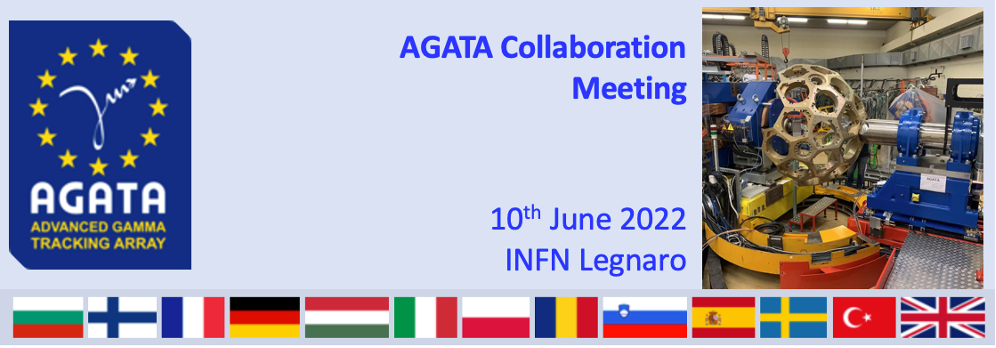Speaker
Description
The region around the magic numbers $N=28$ and $Z=20$ is of great interest in nuclear structure physics. Moving away from the doubly-magic isotope $^{48}$Ca, in the neutron-rich direction there is evidence of an emergent shell gap at $N=34$ [1], and in the proton-deficient direction, the onset of shape deformation suggests a weakening of the $N=28$ magic number [2]. The $^{47}$K(d,p)$^{48}$K reaction is uniquely suited to investigating this region, as the ground state configuration of $^{47}$K has an exotic proton structure, with an odd proton in the $\pi(1s_{1/2})$ orbital, below a fully occupied $\pi(0d_{3/2})$ orbital [3]. As such, the selective neutron transfer reaction (d,p) will preferentially populate states in $^{48}$K arising from $\pi(1s_{1/2}) \otimes \nu(fp)$ cross-shell interactions. The implications of this extend both down the proton-deficient $N=28$ isotonic chain, where these interactions are expected to dominate the structure of the exotic, short-lived $^{44}$P nucleus [4], and across the neutron-rich region, where the relative energies of the $\nu(fp)$ orbitals is the driving force behind shell evolution.
The first experimental study of states arising from the interaction between $\pi(1s_{1/2})$ and the orbitals $\nu(1p_{3/2})$, $\nu(1p_{1/2})$ and $\nu(0f_{5/2})$ has been conducted, by way of the $^{47}$K(d,p) reaction in inverse kinematics. A beam of radioactive $^{47}$K ions was delivered by the GANIL-SPIRAL1+ facility, with a beam energy of 7.7 MeV/nucleon. This beam was estimated to be $>99.99$% pure, with a typical intensity of $5\times10^{5}$ pps, and was impinged upon a 0.13 mg/cm$^2$ CD$_2$ target. The MUGAST+AGATA+VAMOS detection setup [5] allowed for triple coincidence gating, providing a great amount of selectivity. An analysis based both on excitation and gamma-ray energy measurements has revealed a number of previously unobserved states, and preliminary differential cross sections for the most strongly populated of these states will be presented.
[1] D. Steppenbeck et al., Nature 502, 207 (2013).
[2] O. Sorlin and M.-G. Porquet, Prog. Part. Nucl. Phys. 61, 602 (2008).
[3] J. Papuga et al., Phys. Rev. C, 90, 034321 (2014).
[4] L. Gaudefroy, Phys. Rev. C 81, 064329 (2010).
[5] M. Assié et al., Nucl. Instrum. Methods A 1014, 165743 (2021).

